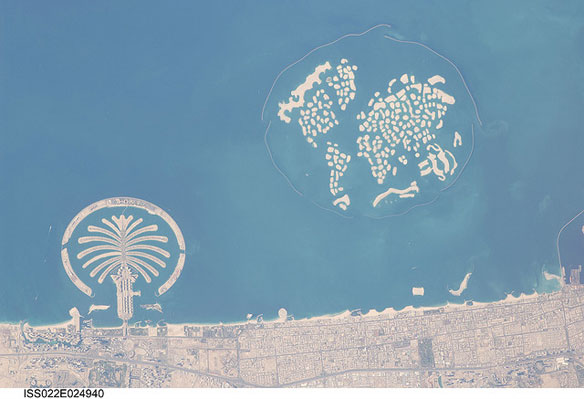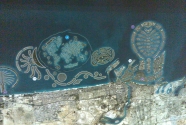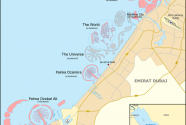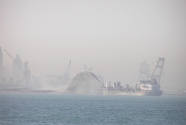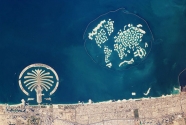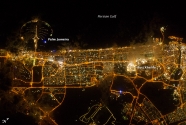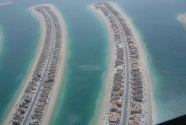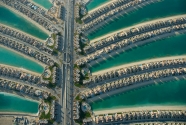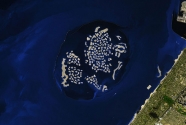[youtube]http://www.youtube.com/watch?v=F6d11Q14A5A&feature=player_embedded[/youtube]
Uploaded by NASA / EarthObservatory on Jan 17, 2012
By NASA
To expand the possibilities for beachfront development, Dubai undertook a massive engineering project to create hundreds of artificial islands along its Persian Gulf coastline.
Built from sand dredged from the sea floor, and protected from erosion by rock breakwaters, the islands are shaped in recognizable forms such as palm trees. As the islands grew, so did the city.
The above video includes satellite images showing the growth of Dubai, one of the United Arab Emirates, between 2000 and 2011.
Taken by the Advanced Spaceborne Thermal Emission and Reflection Radiometer (ASTER) on NASA’s Terra satellite, the false-color images were made from visible and infrared light. Bare desert is tan, plant-covered land is red, water is black, and urban areas are silver.
In 2000, the area was nearly entirely undeveloped. By 2011, whole city blocks had sprung up. Offshore, the first palm-shaped island, Palm Jumeirah, reached completion.
Environmental Impacts of The Palm Islands Construction
The construction of the Palm Islands and The World, for all Nakheel’s attempts to do otherwise, have had a clear and significant impact on the surrounding environment. It would be impossible to introduce a change of such magnitude to an established ecosystem and not anticipate any negative changes or reactions in the area’s wildlife and natural processes. The construction of the various islands off the coast of Dubai has resulted in changes in area wildlife, coastal erosion and alongshore sediment transport, and wave patterns. Sediment stirred up by construction has suffocated and injured local marine fauna and reduced the amount of sunlight filtered down to seashore vegetation. Variations in alongshore sediment transport have resulted in changes in erosion patterns along the UAE coast, which has also been exacerbated by altered wave patterns as the waters of the Gulf attempt to move around the new obstruction of the islands.
The World is sinking: Dubai islands ‘falling into the sea,’ The Telegraph
The “World”, the ambitiously-constructed archipelago of islands shaped like the countries of the globe, is sinking back into the sea, according to evidence cited before a property tribunal. Their sands are eroding and the navigational channels between them are silting up…
Palm Islands, Satellite Images, NASA
Along the coast of Dubai—one of several emirates comprising the United Arab Emirates—are human-made islands. From south to north, the artificial island sites in this image are Palm Jebel Ali, Palm Jumeirah, The World, and Palm Deira. Palm Jebel Ali and Palm Jumeirah appear largely complete in this image, looking like giant palm trees enclosed in huge arcs.
Slipping Sands Of Time Hit Dubai’s World, Time Magazine
The World islands off the coast of Dubai are sinking. The development, consisting of 300 islands, was designed to look like the countries of the globe when seen from above (or from the top of Burj Khalifa, the world’s tallest building onshore in the city). The islands were intended to become luxury hotel complexes and private properties, each tailor-made to suit its owners…
Coastal Erosion Threatens Evolutionary Hotspots, Green Prophet
A shoreline expert is concerned about the toll construction and shoreline projects are having on the world’s marine ecosystems. Looking at the intensive construction projects ongoing in the Gulf region, such as Dubai’s The World, and over-pumping of aquifers by the Palestinian and Israeli authorities, Berne sees the current management of shorelines as a disaster. In an interview with Green Prophet, Berne points out the problems in the Middle East and gives alternative solutions, such as offshore ports powered by solar energy, to stop soil erosion and habitat loss…

